A few months ago I wrote an article about how space exploration has become boring. The title was deliberately provocative, and of course it goes without saying that I’m approaching the subject from the point of view of a layman. But the point I made stands – it’s been a very long time since any mission to space, and even longer since any crewed mission to space, was of anything more than minor interest.
Many space missions in recent years saw unmanned probes launched, satellites placed into orbit, and the only missions with crews aboard visited the International Space Station. The ISS is without doubt an amazing feat of technology and engineering – but after more than two decades of permanent inhabitation, it’s long since lost much of its interest from the point of view of the layman. Scientifically and technologically space continues to be very important, but for me – and many other folks as well – it’s no longer the inspirational, aspirational place it once was.

Partly that’s a consequence of the scaled-back nature of crewed missions, the budget cuts space agencies have faced since the end of the Cold War and its associated space race, and perhaps the difficulty, expense, and length of time required to undertake missions to places we’ve never been before. But regardless of the cause, missions to space in the real world have lost much of their lustre over the decades, and no longer feel as special or as interesting as they once did.
But William Shatner’s recent trek to space was different. Even an old cynic like me felt genuine awe and wonder at the idea that Shatner – Captain Kirk himself – was actually going into space. For decades, journeys to space were the exclusive purview of a tiny number of well-trained air force pilots and scientists. Just getting into the astronaut or cosmonaut programmes required either a career as a high-flying ace fighter pilot or a doctorate in a relevant scientific field. There have been attempts to put spaceflight within reach of more people – Christa McAuliffe, who died in the Space Shuttle Challenger disaster, was set to be the first teacher to travel into space. But generally speaking, becoming an astronaut and travelling to space was out of reach for practically all of us.
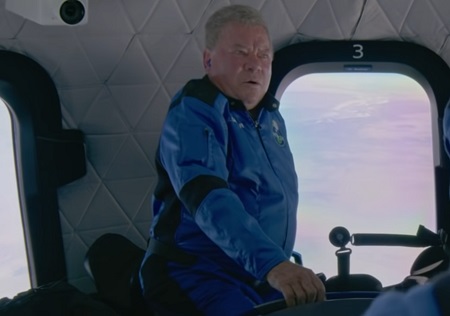
People like Elon Musk and Jeff Bezos have talked in vaguely-defined terms about future missions to space or to Mars that would bring along more civilians and regular folks, but those missions seemed like a long way off. Then came missions in the last couple of years taking paying passengers – but at such a high cost that space felt like a playground for the billionaires’ club and was still beyond the reach of most ordinary people.
William Shatner’s space flight has gone a long way to challenging all of those perceptions. There’s something truly inspirational about the idea of Captain Kirk actually going into space; just writing those words feels incredibly surreal. This character was at the head of a television show and a franchise that, for more than half a century, has done more than any other to inspire people to look to the stars and to look to a future where space travel will be something anyone can participate in. And here he was, actually making that dream a reality in the real world.
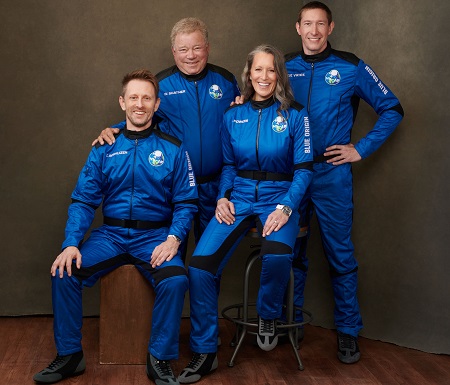
It’s impossible to overstate the importance of Star Trek as an inspirational franchise. Generations of people have watched the series and been inspired by its message, its morals, its optimism, and its technology. The franchise has a track record of bringing its technologies to life – everything from tablet computers, wireless communicators, video calling, and more were “predicted” by Star Trek before becoming a reality. And perhaps that’s what makes William Shatner’s space flight so inspiring – he made the dream of going to space come true as well. There’s hope that, if Captain Kirk can actually travel into space, as Star Trek depicted all those years ago, perhaps the rest of us can too.
Not to be impolite, but at the age of 90, William Shatner isn’t in the prime of his life in terms of his physical condition. He looks great for 90, don’t get me wrong, but there’s a bit of a belly, a few too many wrinkles, and the ever-present toupée! But I’m not here to criticise any of that – because it’s those things that make his journey to space even more astonishing and aspirational. Not only is Captain Kirk himself in space, but here’s someone who’s older than any previous space traveller, who isn’t in the best shape of his life, and yet still it was possible to undertake that incredible journey. By simply being who he is, Shatner has once again inspired millions of folks who might’ve felt space travel was beyond them. Perhaps they felt they were too old, or they have a health condition, or something else. But seeing William Shatner at age 90 boarding that rocket and floating around up in space demonstrates to all of us that such a journey might be possible after all.
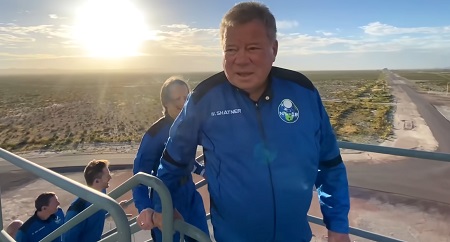
To me, that’s the success of this latest mission to space. For the first time in a very long time, a crewed space mission managed to get me genuinely excited and emotional; I felt I was sharing that moment with William Shatner and the others aboard the rocket. His sense of awe and wonder was so genuine, and the way he spoke and conveyed how it felt was passionate and beautiful.
There are still issues with space travel. The fact that it costs such an insane amount of money is going to be a barrier for a lot of people. But that was true of many inventions from the motor car to the aeroplane, and now those methods of travel are available to many more people than they were when they were first invented.
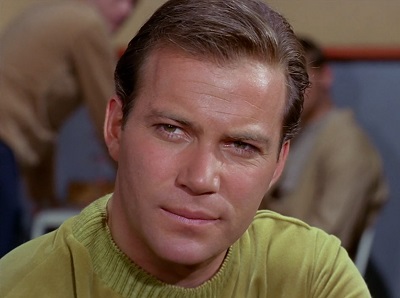
It feels like we’re on the cusp of a new age of space exploration. No longer will space be the exclusive realm of government-funded agencies, gated off to all but a select few people who were privileged enough to be able to head down the perfect career path. Commercial spaceflight has the potential to open up space to untold millions of people – and not just for short fun jaunts either. Orbital hotels, moon colonies, the exploration of Mars, and so many more things all feel one step closer today than they did just a few short weeks ago. That isn’t William Shatner’s doing – Blue Origin, SpaceX, and other companies have been building up to this moment for years. But once again, William Shatner brought space to the fore and captured the public’s imagination in a way that only he could.
I have no time for the naysayers. Prince William, one of the last wriggling vestiges of a dying aristocratic elite, had the audacity to criticise Shatner’s spaceflight shortly after he returned to Earth, saying that we should focus our energies on fixing climate change, not racing to colonise new worlds. But why can’t we do both? And not only that, but there’s more to fighting climate change than getting to the precious “net zero” that seems to be the fetish of our current crop of leaders. Space can offer solutions – harvesting solar energy, for example, capturing carbon and removing it from the atmosphere, or even building solar shades to shield parts of the Arctic and Antarctic are among many hypothetical ways that missions in space could have a real-world impact. And for all of the criticisms I made earlier of space exploration and missions to the ISS feeling boring from the layman’s perspective, the scientific advances they provide have already made an impact here on Earth.
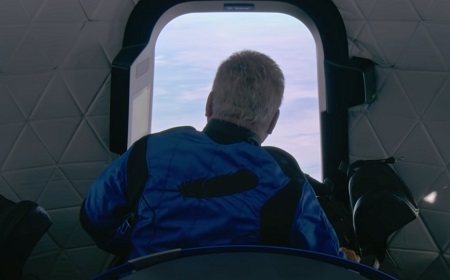
For the first time in a very long time, a real-life mission to space managed to capture my attention – and showed off to millions of people that the dream of space travel, embodied by television franchises like Star Trek, hasn’t died. There’s the real and genuine potential to repeat this feat, and as technology continues to improve and costs come down, maybe spaceflight will be within reach of the average person sooner than we might expect.
All William Shatner did was accept an invitation and take his seat. But that simple act, and the wonderful reaction he had to it, was life-changing – and not just for the man himself. Just as he did in the 1960s when he commanded the starship Enterprise, William Shatner has once again inspired people all over the world, showing us that it isn’t futile to look to the stars.
Some images used above courtesy of Blue Origin via YouTube. This article contains the thoughts and opinions of one person only and is not intended to cause any offence.

